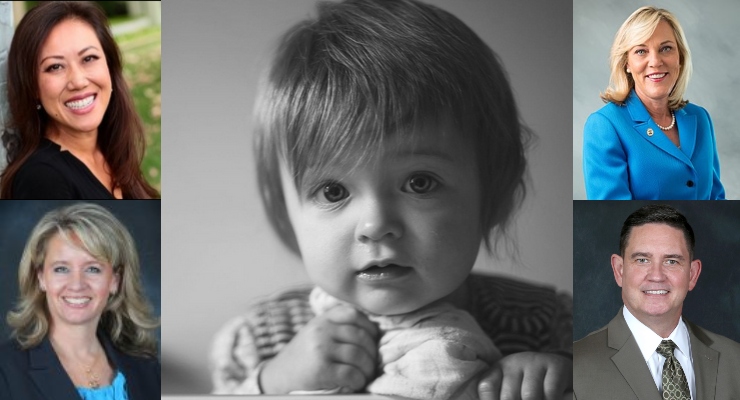
[Editor’s note: This is part two of a multi-part series on the state of the Los Angeles County Foster care system and the effects of recently enacted state legislation to streamline the foster care process.]
As upwards of 18,000 children now move through the LA County Foster Care system, it has long meant that those young people may continually bounce from home to home, with an ever-dwindling number of care providers among the County’s 88 cities.
But now the State is almost three years into implementing a new system with one simple goal—to move foster children into “forever families,” or long-term homes, more swiftly. The lofty aim requires a massive budget, a cohesive plan, and a more tightly focused system.
In 2017, the State enacted its Continuum of Care Reform act, based on Assembly Bill 403, creating a network of services and providers to more directly impact the life of foster children, and that impact, like any governmental system, is moving slowly but steadily, say foster care experts.
“This is a significant change of large magnitude, particularly in LA County which has, by far, the largest number of foster children in the nation,” said Chanel W. Boutakidis, CEO at Five Acres, the second oldest foster care organization in San Gabriel Valley, which has been working with foster children for over 132 years.
“We are working quickly and thoughtfully to find solutions to this State reform vision,” she said. “We are also a part of planning and implementation groups with representatives for our county agencies—the Department of Mental Health, Department of Children and Family Services, and Probation.”
According to the California Department of Social Services (CDSS), accreditation of Short-term Residential Therapeutic Centers (STRTCs) and Foster Family Agencies (FFAs) began in 2016. Beginning January 1, 2017, new licensure, rate systems and mental health certification for STRTCs and FFAs were due to take effect, but an extension was granted for an additional year.
The new Resource Family Approval process has also been in place state-wide since then, however, which means an additional County review of children placed in STRTPs for more than six months.
The Continuum of Care works with current reform efforts, including:
Approved Relative Caregivers Program (ARC)—participating counties support relative caregivers with a payment equal to the basic foster care rate.
Child and Family Teaming—An effective approach to coordinated care and case planning for all children and youth in the child welfare system.
Pathways to Mental Health—Originating from the Katie A. lawsuit settlement, Pathways is intended to improve the coordination between child welfare and mental health systems so that children in foster care receive timely and effective individualized mental health services.
Quality Parenting Initiative —Will create new strategies and practices within child welfare for the recruitment and retention of quality caregivers, and support biological parents with reunification efforts.
Residentially-Based Services Reform (RBS)—A demonstration project first began in 2008, which tested a short-term residential program model with ongoing community-based services and support, and which serves as the foundation for STRTP.
Resource Family Approval (RFA) Program—A pilot program that provides upfront training and assessment of families seeking to parent children in foster care will expand state-wide.
According to CDSS, Continuum of Care Reform “brings together new and existing reforms to our child welfare services program designed out of an understanding that children who must live apart from their biological parents do best when they are cared for in committed, nurturing family homes. Implementation of these reforms will be a multi-year effort that cuts across various levels and branches of government, the public and private human services delivery sector, and a wide array of stakeholders with diverse interests.”
The California Department of Social Services, in collaboration with the Department of Health Care Services, is the lead state agency for foster care implementation.
This type of reform for the state, as well as LA County, requires a county-wide team of leaders to rapidly help mobilize and change a historically cumbersome system with countless moving parts.
As Boutakidis noted, “As we all know, a vision is just a vision. It is the implementation that matters. It’s a great vision, but not one that will come quickly and easily. We are navigating the ship through new waters.”
“It’s going to take time to make the changes that we think are needed,” agreed Kym Renner, deputy director of the Los Angeles County Department of Children and Family Services (LAC DCFS).
“And,” Renner continued, “the types of changes that happen with Continuum of Care reform are universal to the entire system, and also incredibly comprehensive, because there are so many pieces and parts of the system that have to truly change. But it also is inclusive of the people running the system, and being able to see and evaluate the entire foster care system with the lens of the trauma that our youth have gone through, and that our families have gone through.
“It’s a cultural shift,” continued Renner, “and it takes time, but we’re definitely headed in the right direction.”
Bobby Cagle, director of Los Angeles County Department of Children and Family Services, is quick to point out that the numbers are daunting, both in terms of the number of children affected, as well as the number of professionals working to reform and rebuild the system.
The LAC DCFS, according to Cagle, has approximately 9,000 workers, 4,000 of whom are social workers.
Cagle places a higher emphasis on not only training, but a clear understanding of the foster care system dynamic.
“We try to hire the very best social workers possible, highly qualified in terms of degrees and, experience behind that,” Cagle told Pasadena Now recently, “and then really try to help them through the training process, to better understand all of the dynamics that they’ll be dealing with. There are families that come to our attention often times that have any number of difficulties from drug and alcohol use to domestic violence, to just homelessness and a pure poverty set of concerns.”
L.A. County Supervisor Kathryn Barger, in whose district Five Acres is located, also weighed in on the issue, and noted, “We as a County, are working in a multidisciplinary way to address the needs of vulnerable children and family in a holistic way.”
L.A. County’s foster care network includes the Departments of Mental Health; Children and Family Services; Probation; and community-based service providers.
“The County works on a daily basis with all of the residential therapeutic programs in the 5th District which I have personally visited,” added Barger.
Cagle also acknowledged that children in the foster care system come from all manner of difficulties and traumas that may manifest themselves in unlawful behavior, either in schools or in local communities.
“Anytime I speak to groups publicly about kids in foster care, one of the first things I try to say is these kids are in a very difficult circumstance, through no fault of their own,” Cagle said.
“These are youth who’ve been through some of the most traumatic experiences that you can possibly imagine,” he continued, “beyond even the fact that we’ve removed them from their home. And it makes it very difficult for them to really normalize, a life that is sometimes chaotic. They also continue to experience difficulties based upon the trauma that they have.
These kids need a great deal of understanding from the public and from the communities in which they live because they have been so traumatized.” Cagle added.
Five Acres was one of the Residentially-Based Services (RBS) pilot providers alongside 22 other agencies across the state that help to lay the foundation of the vision that every foster child deserves a safe, loving and permanent family solution. During the course of the RBS pilot they were able to bring the most children into permanent family solutions.
“Even though we were an RBS provider, and probably the best prepared to implement STRTP, it has been a significant struggle because we are now serving young children that have never been in foster care to older children that have been in the system and exhibit high-risk behaviors.
We are building new fences, developing new procedures, retraining our staff and learning how to work with this wider range of needs as we are implementing. It’s like building the ship while sailing, ” Boutakidis said.
Before the state reform, each residential facility was licensed for a particular level of service. This meant they worked with, and were familiar with, working with a defined segment of the foster care population. Some specialized working with children under the age of 12, or young mothers, while others may have specialized with probation. With the reform, these specialized populations no longer exist, and STRTP providers have to serve the full range of foster child needs.
At the same time, local government leaders continue to push for more help for foster children, particularly State Senator Anthony Portantio, who represents Pasadena in the State Assembly.
As his office told Pasadena Now, Senator Portantino has authored four bills and co-authored eight bills that attempted to improve the lives of foster youth and change the welfare system. These bills provided expedited timelines for assessment and determination of special education eligibility (AB 497), increased standards for sibling visitation (AB 743).
AB 181 also began the work to formalize a Foster Youth Mental Health Bills of Rights, while AB 671, worked to require that social worker supervisors have a master’s degree.
As chair of the Budget Sub Committee on Education, Senator Portantino also recently earmarked $5.2 million in the State Budget for Cal Grants for foster youth. Last year, Senator Portantino was instrumental in placing $20 million in the state budget for rapid rehousing at California State Universities and the University of California and $9 million for wraparound services at Community Colleges. Many of the beneficiaries of these allocations will be foster youth.
Even as the new reforms began to show results, foster care leaders agree that foster care is a struggle that is ongoing, and a constant battle.
Renner noted, “The foster care system really presents a lot of opportunities to families. And what we have found is that they’re under-resourced in terms of looking for a loving and comforting home to serve our foster youth. We’re always looking for more families.
“We would never say that we have enough of the right homes for each youth,” Renner continued. “Every one of our kids that we work with presents a very unique set of circumstances. And so we, it’s hard to build a system that’s based on one set of circumstances when you actually need to be able to build a system based on very unique conditions of every child that we serve.”
As Supervisor Barger told Pasadena Now, “There is always more that can be done to support our foster youth, and I encourage everyone to do what they can to get involved with the foster care system by becoming a foster parent, a mentor or a volunteer contributing time and talent to those in need.”
















